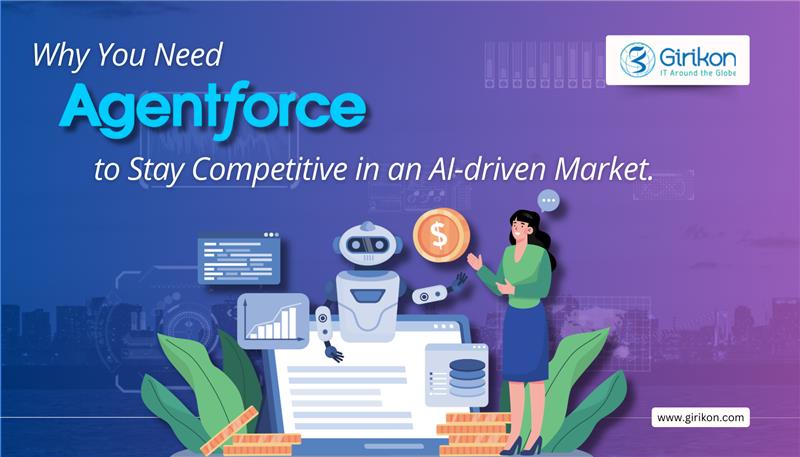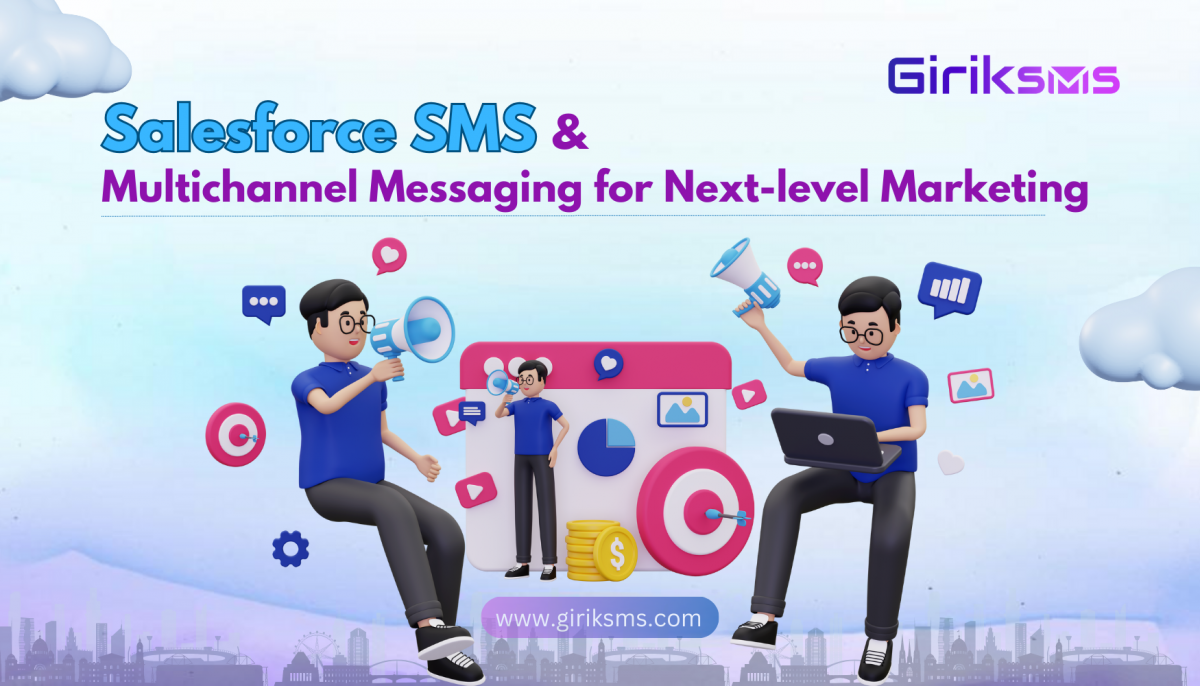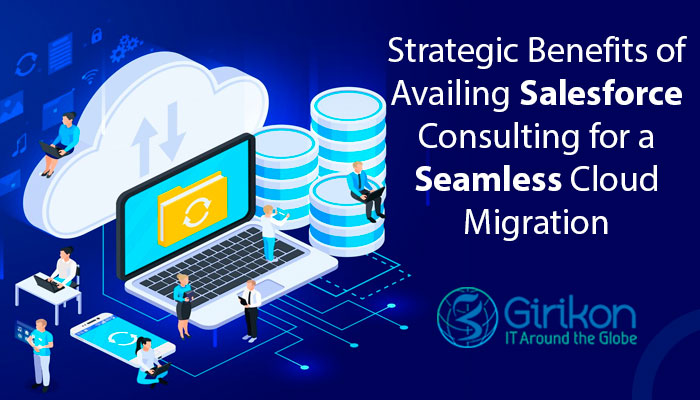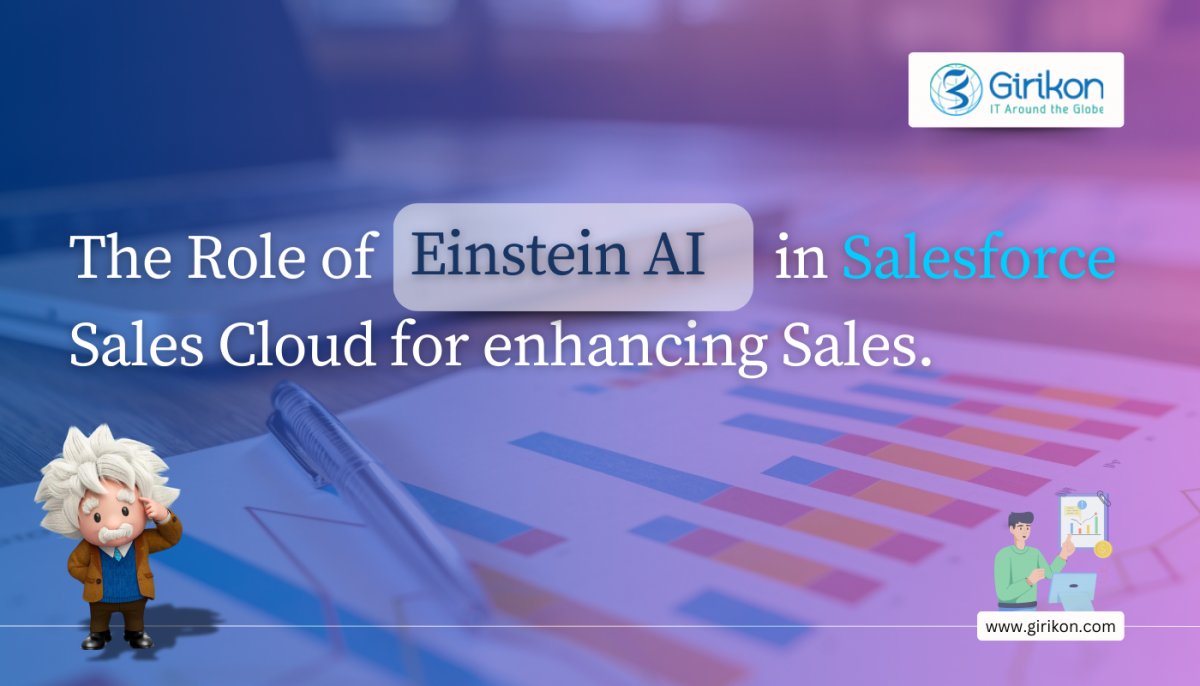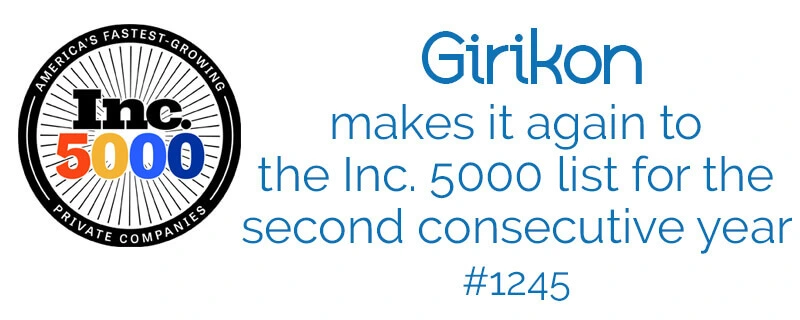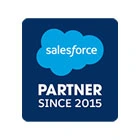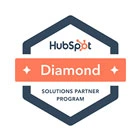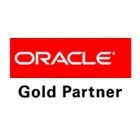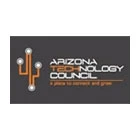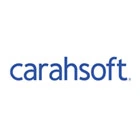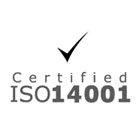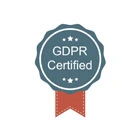Over 150,000 companies worldwide rely on the Salesforce platform, which unifies data from multiple sources, including users, customers, and integrations. However, the need for effective data management grows along with the amount of data.
A crucial element in this process is archiving Salesforce data. Even if your Salesforce data grows over time, you can still manage data efficiently, save storage expenses, and preserve a flawless user experience.
What is Salesforce Data Archiving?
Some of the data in your Salesforce system eventually becomes less important as it accumulates over time. While not all data needs active access, a large portion of it nevertheless needs to be kept on file in order to comply with legal obligations and for possible future use.
Businesses are required by industry-specific norms and data regulation laws to retain various types of data for specified amounts of time. Thus, long-term, safe data storage is required by law in addition to being good practice.
Even while maintaining your data is one of your legal responsibilities, these same regulations frequently require that sensitive data be deleted or have access to it restricted after specific periods of time or under pre-defined circumstances. Laws like the California Privacy Rights Act (CPRA) and the General Data Protection Regulation (GDPR) are based on the principle of data minimization, which states that companies should not retain more data than is essential or for longer than is necessary.
Difference between Data Archiving and Data Lifecycle?
Since both data archiving and data lifecycle management are essential components of data governance, it's easy to mix up the terms. However, these two ideas serve different functions and follow different procedures.
The process of managing data throughout its lifecycle, from creation and initial storage to the point at which it becomes outdated and is finally removed, is known as data lifecycle management. It consists of multiple crucial phases that center on the lawful use and preservation of information. Anonymizing production data is essential in this situation to maintain compliance.
On the other hand, data archiving is a particular phase in the data lifecycle. It entails transferring dormant data from main storage to a system made especially for preservation over time and sporadic access. Here, keeping data available when needed is important, but it shouldn't clog the system or impair its functionality.
To put it briefly, data archiving is the crucial decision on what to do with your data as its operational life draws to a close. Data lifecycle management, then, is a more comprehensive procedure while the data is being used. Gaining a full understanding of these ideas can help you make informed decisions about what data to archive and when, so your Salesforce system will function as efficiently as possible while still adhering to regulations.
Why should you archive your Salesforce data?
There may be an urgent need to delete data from Salesforce if you are already experiencing system delay. You can improve system performance, simplify your archiving, and maintain compliance with a strong data lifecycle strategy.
Data privacy is of utmost importance in the modern world, particularly when it comes to personal data. Strict laws like the CPRA and GDPR necessitate this. But it's important to remember that other factors should also be considered, in addition to data archiving. To respect privacy requirements and maintain the functionality of your data, you should also take data anonymization and pseudonymization into consideration. If you manage these legal obligations well, archiving may only be necessary when system performance is an issue.
While you are erasing data, initiating data archiving may seem like a risky idea, but it doesn't have to be. You won't find data deletion or even archiving to be as daunting once you fully grasp the data lifecycle. Your archiving project will be a lot easier to handle if you practice effective data lifecycle management.
A backup plan serves as your security. Your backup can act as a safety net in case you ever make a mistake with your archiving criteria, guaranteeing that no important data is lost in the process. Salesforce ensures your safety and security. Large Data Volumes and more complex use cases can be more effectively managed with a third-party archiving solution.
Benefits of Salesforce data archiving
There are several reasons for organizations to consider Salesforce data archiving.
An effective archiving solution can solve:
System performance
Legal and compliance needs
Obsolete data
Salesforce data archiving improves system performance
Archiving Salesforce data can enhance system performance in these ways:
Because there is less data to manage, activities proceed more quickly.
In the end, archiving helps systems operate better by preventing restrictions from being reached, such as API call limits and data and file storage capacity constraints.
Salesforce data archiving facilitates adherence to legal, regulatory, and data retention policies:
Businesses operating in highly regulated industries are frequently required to comply with several regulatory standards, which might vary depending on the business model and regional presence. You cannot keep data in your Salesforce Org permanently since noncompliance might have detrimental financial effects.
Sensitive information in your Salesforce data might need to be kept safe in case the necessity to exhibit the documents later on arises. In that scenario, archiving this data would be preferable over completely deleting it.
Certain organizations might have regulations requiring the removal of information, while others might have lengthy data retention periods that include keeping a lot of data. Your data must comply with the company's data retention policy, depending on the terms of the policy.
By removing data from production Orgs and restricting access to a smaller set of users, archiving Salesforce data can assist in adhering to these laws and standards. This guarantees that should it become necessary in the future, the data will still be searchable and unarchived.
Your org can benefit from archiving obsolete Salesforce data
It may not always be the best idea to delete outdated data in order to make storage space available because doing so may result in the loss of important business data. You can make sure you have the data in case you need it later by properly archiving Salesforce data rather than deleting it.
How do you archive Salesforce data?
Identify the data
Establish effective ways to help you identify the data that has to be removed.
Learn the best practices and go beyond the capabilities of Salesforce native queries by collaborating with a Salesforce consulting company.
Retain your data
Keep your data safe and unchangeable for extended periods of time by storing it in an encrypted manner.
For an audit trail, make sure the data is safe and secure for many years to come.
Remove your data
Remove data from Salesforce at scale in a safe and organized manner.
To maintain data balance, queue up data loads over the course of several days, weeks, or months.
Design your User Experience
Give your Salesforce users a familiar appearance and feel by creating custom page layouts.
Create the connections and relationships that your CRM data needs to have.
Best practices for Salesforce data archiving
To achieve efficient Salesforce data archiving, thorough planning and analysis are required. Organizations should plan for the following when archiving:
Storage and Limits
Monitor how much storage your company has available and how much is being used. This can help you determine how much storage space you need to free up, allowing you to outline the scope of your archiving job.
Usage Trends
To effectively archive data in your Salesforce system, you must first understand the data utilization metrics. Make sure you have the proper tools for assessing data volume and tracking trends. Use APIs based on Salesforce Einstein Analytics to create numerous dashboards and track data usage and trends. The software can also help you identify misuse or strange events.
Parent-Child Relationships and Data Integrity
To retrieve data from the Salesforce data archive and bring it to production, make sure to keep the archived object's Parent-Child record. Otherwise, the data may be incomplete or inaccurate. For example, unarchiving an account without its related contacts would not be desirable.
And, if you intend to delete data from the Salesforce data archive, check with your organization's legal team first, since there may be data integrity consequences, such as Parent-Child Relationships or Field Removal.
Determine how often you want to archive Salesforce data.
Establish the frequency of archiving and develop archiving processes that allow for automatic archiving.
Encrypt your Salesforce data archives
Your archived data should be protected both in transit and at rest to ensure that only authorized individuals have access to it.
Use the best Salesforce archiving tool
When selecting a Salesforce data backup and archiving tool, look for one that is certified by Salesforce and has a proven track record. It must be user-friendly and efficient.
Archiving Salesforce data is critical for large-scale businesses. As Salesforce data grows, data archiving becomes increasingly important because it improves Salesforce system efficiency, automates compliance, and reduces storage without losing access to data. For efficient and successful Salesforce data archiving, collaborate with a team of certified Salesforce consultants from Girikon, a Gold Salesforce partner.
Here’s what you can do with Girikon Data Archiving Services
Organizations looking to archive their Salesforce data at scale need a comprehensive strategy that ensures safe Salesforce data archiving at scale. With over a decade of experience in working with Salesforce customers, Girikon’s professional Salesforce Consulting Services can support the most complex Salesforce data archiving use cases for businesses. Contact us today to learn more.
It is obvious that artificial intelligence (AI) will transform the way solutions are designed. It is time to acknowledge that there is a fundamental change in how one needs to approach architecture. In the past, solutions were developed based on an algorithmic understanding of the problem, guaranteeing consistency in output with the same input. For example, in a CRM system with an account segmentation process, the conventional approach involved defining fields on the account and applying business logic for segmentation, driving other automation in the system.
However, in the era of artificial intelligence, models are created using a lot of data, leading to the creation of predictive models. Large language models (LLMs) change the way solutions are designed because they can handle more intricate personalized segmentation and consider a much larger range of data.
In order to better comprehend this, let's examine how AI is affecting solution design and delivery by closely examining the following topics.
Transforming the user experience
The transformative impact of artificial intelligence (AI), especially with regard to generation AI, is responsible for its current surge in popularity. Users can interact with technology using natural language for the first time. This represents a significant paradigm shift since it can now receive requests that fully and accurately match the user's intentions.
Moving to a Natural Language Processing (NLP) experience
Platforms are starting to focus more on NLP (Natural Language Processing) and less on if-then-else scenarios. The user is spared from having to search through numerous fields. Rather, the user receives an English response to their questions. This streamlines onboarding, increasing its speed and effectiveness without requiring agents to undergo in-depth training.
Increased productivity
AI empowers businesses to do more with fewer customizations translating to increased work efficiency.
The challenges of AI
While AI provides benefits, it also presents new challenges, such as:
Having to account for a wider range of data in a probabilistic context.
Performance guarantees are not identical, therefore factors like error management and observability must be re-evaluated.
Without direct insight into how language models work, troubleshooting becomes more challenging.
Problems like hallucinations, where the model will make things up – while there are solutions to address these problems, none are completely dependable.
Prompts can introduce biases and additional security problems into a language model.
In an era where data privacy and trust are paramount, it is critical to create approaches for error management and improving the predictability of AI output in order to secure data security and privacy.
How is AI impacting engagement with professional services companies?
Even while processes have evolved and agility has increased over the past couple of decades, the traditional approach to delivery has stayed mostly unchanged.
This is how AI can change the engagement model with professional services firms:
Fast-track every stage of the delivery process.
The kinds of jobs that people can have and the kinds of skills they need will change dramatically as a result of NLP. If the volume of data generated by the sales team during the discovery phase can be summarized into a handover, it would save the project team and the customer a lot of time, accelerating all the stages of a typical delivery and making the process more efficient.
Maximize human potential
Artificial Intelligence provides the capacity to generate commodities for manual labor, particularly in professional services engagements. When carrying out an engagement, be it a Salesforce delivery or anything else, a lot of manual tasks are frequently required to keep everything organized and in sync. With the help of AI, we can do away with that and make it a commodity, freeing up the human brain to focus on more difficult jobs and providing customers with greater commercial value.
For intricate CPQ (Configure, Price, Quote) projects, for instance, the user doesn't have to worry about billable hours for manual tasks—instead, they can concentrate on creating appropriate pricing policies and working with customers.
Can AI solve everything?
AI is pervasive and has an impact on professional services and architecture. Can it resolve every issue? Or is it just a fantastical idea with dubious practical application?
Let's examine this in more detail.
AI as a co-pilot
People have very high expectations of AI. Consequently, there is always a concern about losing jobs to AI.
But the reality is that AI helps people do tasks more quickly and easily, freeing up their time to pursue other interests.
Approach AI with an open and curious mindset
The revolutionary journey of AI has only just begun, and given the hype and its ongoing progress, it's critical to recognize its potential. Instead of seeing AI as a closed subject, but rather as a new frontier, one should approach it with curiosity and a commitment to improvement.
The energy impact of AI
It is important to pay attention to how AI affects energy. The extensive usage of AI may result in a considerable carbon footprint. Globally, addressing this challenge—which includes data management, data security, and environmental aspects—is imperative, meaning that solutions must be found as quickly as possible.
Language generation is no longer just a human ability
Natural language generation capability is no longer restricted to humans.
Up until recently, language was thought to be an ability unique to humans. Large language models can now mimic complex ideas and emotion-based communication that were previously thought to be specific to humans, even though they don't fully comprehend the material they generate. This is a fundamentally important change that calls into question the idea that language production is exclusively a human ability.
AI is ultimately a tool that requires a human at the helm
Even with its advances, artificial intelligence still needs clear guidance on our goals. No matter how complicated the task or its execution, human intelligence, and minds are essential for directing AI to get the intended results. Even though AI can expedite activities and increase productivity, in the end, it is still a tool that needs human guidance.
How does AI impact innovation?
Problem-solving capabilities
The evolution of AI signifies a shift in problem-solving capabilities. AI can be utilized in the context of the current technology landscape, by identifying the low-hanging fruits, and determining what can easily be delivered to end-users.
Simplifies intent-based testing
Important side discussions are frequently overlooked in team communication, especially when testing is involved. Intent-based testing, which can transform the testing process by guaranteeing that user intent and requirements continuously guide testing efforts, may be made possible by AI's capacity to retain a continuous grasp of intent.
AI as a solution to persistent issues
AI provides a set of tools to solve enduring issues. Artificial Intelligence (AI) has the potential to revolutionize the way that chronic problems in numerous disciplines, like sales pipeline predictability and routing, are approached and improve work efficiency.
How does AI impact DevOps?
Depth vs. breadth in knowledge
When it really gets to understanding and establishing value, it's about depth. In some sectors of the economy, like healthcare, there are generations of expertise where people are retiring after 40 or 50 years of experience. The difficulty lies in archiving that data, incorporating it into a domain-specific large language model (LLM), and utilizing centuries' worth of healthcare-related knowledge at our disposal—all the while being mindful of whether information from the previous century or earlier is still relevant today.
Democratizing DevOps
Within the DevOps process, the essential phases are plan, develop, build, test, release, and deploy. Testing is the main area of influence. Exploratory testing gives the end user the freedom to simply investigate and identify edge cases. AI has the ability to quickly democratize DevOps, enabling participation from those who have never been able to take part in software delivery.
Key security and ethics concerns raised by AI?
Large language models give rise to completely new categories of security risks, which the developer community is still learning about.
As of this moment, it is unknown how serious these threats are. Regarding the degree of autonomy given to AI-driven processes and the ways in which users can provide feedback, a degree of caution is urged. Simple prompt injection attacks are very successful in tricking the huge language model into going against its instructions. They can even fool the defenses that are currently in place. The conflict between those looking to breach systems and those trying to secure them has long been a part of traditional security. But since we are still learning about and addressing the potential risks associated with generative AI, especially with regard to the newer varieties, we should proceed very cautiously when it comes to defining rights, establishing protocols for monitoring, and including humans at crucial points in the development and implementation of these systems.
Want to learn about more ideas, opportunities, and strategies to maximize the value of Salesforce data + AI? As a Gold Salesforce implementation partner with over 300 certified Salesforce professionals spread across 4 continents, our global delivery model has successfully delivered Salesforce RoI to our customers for over a decade. Connect with one of our Salesforce consultants today for a free consultation
The growing demand for the world's leading CRM platform drives up demand for its associated skills. Salesforce implementation entails significant investment and its customization requires an investment in the right set of Salesforce developers
The key question is – How to find and recruit them?
In this blog we explain how to discover talent, what abilities to look for when recruiting a Salesforce developer, and more.
Growing Demand for Salesforce Developers
Factors Driving the Growing Demand for Salesforce Developers.
Digitalization Post-Pandemic
The Salesforce ecosystem expanded dramatically following the outbreak. This is owing to the complete digitization of most processes, including the use of cloud-based platforms like Salesforce. As a result, the demand for Salesforce developers as key members of a company's CRM department has skyrocketed.
Compensation
Attractive salaries offered to Salesforce developers attract more people to this role, increasing the number of people interested in entering this sector.
Innovation and Skill Upgradation
Salesforce upgrades its platform 3 times a year and in order to keep up, Salesforce developers must be abreast of the latest innovations.
Shortage of Skilled Professionals
While there may be a large number of individuals entering this sector, all of them may not have the requisite skills to succeed. Only people who hold relevant Salesforce credentials can be deemed as experts.
With only a handful falling into this group, there is a scarcity of experienced Salesforce development specialists. This resulted in an increase in demand for Salesforce developers.
Role of Salesforce Developers
Salesforce developers are specialists who leverage Salesforce technology to solve business problems. They are familiar with the Salesforce platform and can design tailored solutions based on the client's needs.
They first identify the gaps and issues in the current system and devise the best solutions to address them. After thoroughly understanding the business objectives, developers select the most effective low-code solutions offered by Salesforce technology.
Let's take a look at their responsibilities.
Responsibilities of Salesforce Developers
A Salesforce developer generally handles numerous tasks inside an organization.
Designing, Developing, and Maintaining Apps
The primary responsibility of Salesforce developers building and managing apps on the Salesforce platform tailored to the business needs of the organization.
Understanding Business Requirements
Salesforce developers collaborate closely with project stakeholders and users to better understand their needs and pain points. They tailor solutions to each customer's specific requirements.
Coding
They build solutions using multiple programming languages such as Apex, Lightning Components, and VisualForce on the Force.com platform. Furthermore, they work with web development languages such as HTML, JavaScript, and CSS.
Problem-Solving Skills
They have great problem-solving skills and can understand complex business problems to discover areas for improvement.
Communication
They work with technical or non-technical teams to provide on-call help for app concerns, such as debugging or augmented functionality. Assist users in clarifying their needs, providing information about alternate techniques, and outlining the potential consequences of process changes.
Quality Assurance
They are responsible for ensuring the quality of the solutions they develop. They ensure that any issues are fixed as soon as possible by performing various testing and debugging operations. Salesforce developers create, codify, and enforce app standards and practices to ensure consistency and efficiency.
Seamless Integration
They integrate multiple systems with Salesforce, including in-house as well as third-party apps and systems.
Salesforce Developer Hiring Options
Choosing the appropriate Salesforce developer is critical. However, to make an informed decision, it is vital to evaluate the various employment engagement options available:
Full-Time Salesforce Developers
As the name suggests, they are regular employees and work for your organization just like any other full-time employee.
Full-time employees are dedicated to your company, embrace its culture, and blend in. This provides them with the benefits of regular salary, paid time off, healthcare, insurance, and retirement benefits. Furthermore, depending on the requirements, they operate either in the office or remotely.
They are always available to address urgent issues and contribute to ongoing system enhancements.
When Should You Hire Full-Time Developers?
This depends on your business needs and the individual's skill set and experience. Hiring full-time developers allows you to collaborate with them whenever necessary, and make any necessary project updates quickly.
In-House Developers
They are the ones who are already an integral part of the organization. They work on projects in the same way that full-time developers do, except that they work from your office and not remotely. They receive all of the benefits of a full-time developer. Hiring in-house developers improves team collaboration because they are available on-premise.
When Should You Hire An In-House Developer?
Hiring an in-house developer has several benefits.
You can use their experience and expertise.
You can connect with them anytime during office hours.
You have full control over the team and the project.
Remote Developers
They typically work from home or another location other than the office. Depending on project needs, they can be hired as contractual, full-time, or part-time developers.
When Should You Hire A Remote Developer?
Free up the internal team's time and resources.
Saves on hiring costs.
When specific capabilities are unavailable locally.
Part-Time Developers
They are an excellent choice for firms with variable project demands or budget constraints. You can use their skills for certain tasks while optimizing resource allocation. They save both internal resources and the cost of employee benefits.
When Should You Hire A Part-Time Developer?
When you require a developer quickly for a short period.
When you don't want to incur costs on employee benefits
When you don’t want to block coworking space
Contractual Developers
Contractual developers (sometimes also referred to as project-based developers) are engaged to work on specific projects or tasks. They are given specific deliverables and, on occasion, a time limit. This technique allows firms to gain access to specialist abilities without making a long-term commitment. It is an effective way to scale up your team based on project requirements. They might work full-time or part-time, depending on your business needs. Furthermore, they are appropriate for meeting short-term demands or completing specific projects or tasks.
When Should You Hire A Contractual Developer?
If you have short-term project needs
When you have clearly defined project objectives and schedules
When you need additional skills for a project or task.
Hourly Developers
These developers are only compensated for the hours they work, making it an affordable choice for enterprises. They can be employed for brief periods of time and work on your tasks as needed without committing to a long-term contract.
When Should You Hire Hourly-Based Developers?
When you have projects with varying workloads.
When you need to scale up or downsize your teams at short notice.
The most suitable engagement is determined by your company's needs, project requirements, and budgetary constraints. Each option has its own advantages, allowing you to personalize your hiring strategy to meet your specific Salesforce development objectives.
Skills Required for Salesforce Developers
Look for developers with expertise in:
Apex programming (including DML, batch processes, triggers, and test classes)
Object-oriented programming (OOP)
Salesforce Object Query Language (SOQL)
Salesforce Object Search Language (SOSL)
Lightning Web Components
Lightning App Builder
Salesforce DX
Aura Framework
Fuel API, REST, and SOAP APIs
JavaScript, CSS, HTML
Salesforce Flow
Visualforce development
Roles, profiles, sharing, and security configuration
Salesforce data modeling
Process Builder and Workflows
Migration Tools
Apex test case writing and execution
Version control systems (Git)
AMPscript (for Marketing Cloud integration)
Salesforce Analytics Query Language (SAQL)
SQL for Data Cloud
Node.js, PHP, Python, Ruby, Java, Scala
Many Salesforce developers obtain Salesforce certifications to demonstrate their abilities. It is always a positive sign if a candidate has one.
Consider looking for these credentials:
JavaScript Developer 1 Certification
Platform App Builder Certification
Platform Developer 1 Certification
Platform Developer 2 Certification
While these are 4 primary areas of Salesforce expertise, you can also engage a Salesforce developer with certifications in other products.
B2C Commerce Developer
Skills in eCommerce development with expertise on the Salesforce B2C Commerce platform.
Marketing Cloud Developer
Skills in Marketing Cloud data modeling, data management, and automation.
Industries CPQ Developer
Expertise in CPQ (configure, price, quote) solutions for Communications, Media, and Energy & Utilities Cloud products.
OmniStudio Developer
Expertise in OmniStudio design, workflows, and dynamic UIs.
In addition, a Salesforce developer's resume can also be scanned for assessing basic soft skills. For example, you can look at how applicants characterize their previous projects, accomplishments, and roles. Contributions to Salesforce communities and events may demonstrate effective teamwork and learning skills. Mentoring experience is important if you wish to hire a Salesforce developer as a Team Lead or Tech Lead.
Thus, you can determine whether the developer is motivated to learn, possesses leadership abilities, and more. And lastly, when hiring Salesforce developers, make sure their language capabilities and time zone meet your team's requirements.
Conclusion
It is critical to remember that the success of your initiatives is greatly dependent on the kind of talent you bring to your team. Salesforce developers, with their knowledge in customer relationship management, have the potential to be the major driver of your company's success.
So, take action immediately, use these techniques, and start building your crack Salesforce team with a trusted Salesforce implementation partner. Collaborating with a team of certified Salesforce consultants will propel your company forward while providing exceptional customer-client experiences.
While the secret to understanding customers lies in your data, making sense of that data is a totally different ball game. Evolution in technology and concerns around user privacy have mushroomed new challenges for marketers to know their audience and deliver data-driven experiences. An AI-powered customer data platform (CDP) addresses these challenges and more. CDPs can connect with a single storehouse of data – one that is proprietary, trusted, and acquired with consent.
Salesforce’s own CDP, Marketing Data Cloud, takes things up a notch. It puts marketers in control of the entire customer journey, allowing them to connect, unify, and act on data across all marketing touchpoints and enhance the customer experience across teams and departments – from sales, marketing, service, commerce, and more. Marketing Data Cloud from Salesforce accomplishes four primary functions:
It connects. Connect all your customer data across apps, channels, and devices with out-of-the-box connectors, at scale.
It harmonizes. Aggregate all your data into a single customer profile, autonomously. Data across multiple channels and teams all integrate seamlessly using configurable rules.
It engages. Empower all departments with unified customer profiles and update them in real-time via AI-powered analytics.
It delivers an experience. Data activated from Marketing Data Cloud drives real-time, tailored, timely customer experiences.
In this article, we talk about eight use cases of how Marketing Data Cloud applies these aspects to resolve common challenges faced by marketers, along with their colleagues in sales, service, and commerce. From enhancing engagement to winning customer loyalty, these data-driven methodologies ensure a robust CDP can make every interaction count.
The Engagement Booster
Engage your customers at the right moment with real-time data.
Benefits: Better engagement with improved efficiency
KPIs: Email Click-Through Rates, Conversions, Revenue
Data Involved: Customer engagement data, web data, sales data, web and app visits, browsing history.
CONNECT. CDP connects data from all sources within and outside of Salesforce.
HARMONIZE. The customer's unified profile is created in the CDP. It includes all their engagement activity from across multiple channels and departments. And automatically updates the data in real time with every interaction. And if a customer opts in, CDP can automatically send personalized texts with tailored offers at the right time.
ENGAGE. Geolocation data from a customer’s phone activates an engagement action. And when they walk into a physical store, a tailored offer is sent to their phone via the Salesforce messaging app to nudge them to make a purchase.
EXPERIENCE. A customer is out shopping for a new smartphone that they have been eyeing for a while. To their surprise, they get a discount on the exact same product that they wanted to buy, right when they get to the aisle.
The Smart Advertiser
Make every dollar spent on ads count.
Benefits: Higher Efficiency
KPI: Return on Ad Spend
Data Involved: Customer loyalty status, purchase history, case history, email interactions, browsing history, and geo-location history.
CONNECT. CDP connects all customer data within as well as outside Salesforce – loyalty, purchases, case history, engagement data, demographics, and affinity data.
HARMONIZE. CDP pulls out the customer’s unified profile and creates AI-powered segments. Segment-level data insight from ad partners is incorporated to refine customer segments further for eg, customers looking for specific products and services.
ENGAGE. CDP activates these segments on popular ad platforms to hyper-personalize ads for customers, all this while protecting the customer’s privacy. At the same time, CDP also suppresses ads to customers with unresolved service cases, customers who already purchased the item or returned it, and those unlikely to engage.
EXPERIENCE. Customers view ads of products or upgrades, precisely what they had in mind and within their preferred price band.
The Shopper Styler Drive
Increase revenue with hyper-personalized e-commerce.
Benefits: Higher Conversions
KPIs: E-commerce Revenue
Data Involved: Purchase history, browsing history, activity behavior, loyalty status, case history, and email interactions.
CONNECT. CDP pulls data from all touchpoints between the customer and the brand such as purchase history, buying preferences, loyalty data, service engagement, website, and app engagement, and more.
HARMONIZE. Leveraging the customer’s unified profile, CDP derives intelligent Insights on new metrics such as “propensity score” to predict the customer’s likelihood to buy a particular product. These insights enable marketers to make faster, data-driven, decisions. CDP can drive tailored shopping experiences and promote those products.
ENGAGE. Commerce Cloud leverages insights from Data Cloud to provide tailored shopping experiences to the customer on their brand’s online store or app. And with the help of the customer’s propensity score, data points such as reward points, recent purchases, and recommended products are automatically served up. CDP can automatically activate relevant and timely actions in the customer’s journey. Actions like clicks and cart abandonment can initiate a background process that anticipates the customer’s needs and encourages action.
EXPERIENCE. When a customer visits their favorite mobile accessories brand’s website or app, they get personalized product recommendations. And if they abandon the cart before checkout (for whatever reason), CDP can automatically fire a reminder email with a discount incentive to nudge them to complete the order.
The Website Winner
Improve conversion with personalized experiences.
Benefits: Increased engagement, higher conversions
KPIs: Bounce rate, browsing history, average time spent on a product, session duration.
Data Involved: Purchase history, engagement data, loyalty status.
CONNECT. CDP draws together customer data across marketing, commerce, sales, and service interactions.
HARMONIZE. After unifying all the customer data into a single customer profile, CDP identifies a customer’s past purchase behavior, including their recent purchases. CDP then places the customer in the post-sale segment focused on helping them to derive immediate value from their latest purchase.
ENGAGE. Based on the customer’s recent purchase data, CDP fires a personalized text via the Salesforce messaging app, with a link to the brand’s website to prompt them to learn more about the product and its usage. And as soon as the customer lands on the website, the page is dynamically populated with relevant how-to articles, care instructions, and other relevant and personalized content.
EXPERIENCE When the customer clicks on the link to the website, they land on a webpage populated with relevant content based on their recent activity. This includes product-related articles, videos, images, and additional offers.
The Cross-Seller
Intelligent predictions for your customers’ next purchase.
Benefits: More upsell and cross-sell opportunities, higher conversions
KPIs: Sales, Product popularity, Average cart size
Data Involved: Purchase history, browsing history, engagement data, loyalty status.
CONNECT. CDP connects sales, loyalty, and service data to generate unified customer profiles and offers intelligent insights to reveal opportunities for cross-selling and up-selling based on the data. It can also suggest customer lifetime value (CLV), propensity scores, engagement scores, and more.
HARMONIZE. CDP-powered insights create a new metric called affinity score which predicts a customer’s affinity towards other products. CDP then leverages this data to define new customer segments based on the insights.
ENGAGE. CDP then activates this customer segmentation data across multiple customer engagement platforms. Customers get personalized emails, texts, tailored web and app experiences, and personalized ads on their preferred channels.
EXPERIENCE. As customers browse an online store or app, personalized product recommendations are automatically served up. Customers can view these items and complete the purchase.
The Insight Viewer
Analyze marketing performance.
Benefits: Optimized performance, Deeper Insights, Improved average time for ROI.
KPIs: Product Views, Sales, ROI.
Data Involved: Purchase history, cross-channel activity, Engagement, and Campaign performance.
CONNECT. CDP connects data from all touchpoints across marketing, sales, service, and commerce, to create unified customer profiles. Analytics tools such as Tableau and Marketing Cloud Intelligence leverage this data to augment audience discovery and measurement.
HARMONIZE. Marketing Cloud Intelligence helps marketers optimize campaigns and customer journey performance. Tableau provides deep customer insights to help teams discover new customer segments and behaviors that drive adoption and increase their lifetime value.
ENGAGE. CDP drives the wheel of optimization. Marketing Cloud Intelligence uses data from CDP to refine campaigns. Tableau serves up intelligent audience insights, identifying high engagement areas. These insights then flow back to CDP to drive hyper-personalization in every moment.
EXPERIENCE. As customers enjoy their purchases, brands stay connected with personalized offers on their preferred channels. As data is being gathered and analyzed on the go, brands can measure and optimize campaign performance, discover new segments, and act on high-value actions.
The Service Solver
Convert service cases into happy customers.
Benefits: Customer Satisfaction
KPIs: Service Cases Created, Duration of open cases, CSAT (Customer Satisfaction Score)
Data Involved: Purchase history, Sales data, Service Data, Engagement data, Browsing activity.
CONNECT. CDP pulls in comprehensive service data like service cases, customer service feedback, lifetime value, loyalty data, and more.
HARMONIZE. Service data in CDP augments the customer segmentation process. This helps marketers refine their engagement strategy based on customer service interactions.
ENGAGE. In a scenario where a customer has an open service case, CDP gets notified and pauses all marketing activities tailored for that customer until the case is closed. Additionally, because CDP is receiving all service data, the customer service team has access to the customer’s profile enabling them to be aware of their problem as soon as they reach out to a service rep, and then quickly resolve the issue.
EXPERIENCE. Customers get their order related issues resolved in a matter of minutes. When a new case is logged, the service team quickly reaches out to the customer, being aware of their order and having access to their unified profile. Not only does the customer get the issue resolved quickly, but they automatically get a personalized email or text with a 10% discount voucher for their next purchase to make up for the mistake.
The Loyalty Earner
Reward customers at every stage.
CONNECT. CDP connects data from a brand’s loyalty system into a customer’s unified profile, along with marketing, sales, and service data.
HARMONIZE. Based on interactions with customers in a particular segment, CDP automatically places them into the relevant loyalty tier giving them access to tiered marketing offers and deals automatically.
ENGAGE. CDP activates this segment across multiple engagement platforms and customers in this segment automatically start receiving personalized content. The content (which includes product recommendations and offers) is linked to their loyalty status and encourages them to aspire to be in the next loyalty tier for further exclusive benefits such as rewards, discounts, preorders, and more.
EXPERIENCE. A customer’s latest purchase of mobile accessories automatically moves them to the next tier of loyalty status. This gives them access to exclusive discounts and offers.
It’s time to build your own customer data strategy, and if you have one, you can always refine it. Our extensive experience in Salesforce consulting services can help. With a robust CDP, marketing teams can connect every interaction throughout the customer journey with a unified source of actionable, real-time data. They can truly understand their audience and deliver personalized engagement that drives revenue and builds lasting relationships. And that’s not where the value of CDP ends. In fact, it is just the beginning. Every department and team across sales, service, and commerce can also benefit from the power of a CDP. Powered by Customer 360, Marketing Data Cloud unifies all customer data across all channels and departments to create a single, unified customer profile that is updated in real-time with every interaction. With a unified view of your customer, Marketing Data Cloud empowers marketing, sales, service, and commerce teams to make every moment count.
With a robust Customer Data Platform, your business can interact with your customers not as disparate departments, but as one brand with one voice. A brand that understands and engages with confidence, relevance, and trust. Whether it is prompt Salesforce support, hyper-personalized product recommendations or hyper-segmented targeted advertising, with Marketing Data Cloud you can make every customer interaction count and unlock the true power of real-time customer data. Want to learn more? Connect with our Marketing Data Cloud specialist today.
To sustain in today’s competitive business landscape, businesses require maintaining amiable relationships with their customers. Today, as customers grow more informed, they expect prompt and personalized responses to their queries. To keep up with customer expectations, organizations require adopting robust software like Salesforce. As one of the world's leading CRM platforms and a market share of approximately 20 percent, Salesforce is being utilized by enterprises of varying scales and across diverse sectors for streamlining business processes and smooth management of operations.
However, to draw maximum value out of this platform, businesses must ensure its successful implementation. This is easier said than done and requires the expertise of one the most proficient Salesforce Consulting Partners. However, failing to choose the right partner for guiding an implementation can have a negative impact. Mentioned below are some fatal mistakes that organizations usually make when selecting a partner:
Failure to Consider Business Goals: When selecting a partner, an organization must have a clear vision of their business goals, as well as their pain points. It’s very important to understand the requirement of implementing Salesforce for operational efficiency and the problems it could address. If they fail to evaluate all these, they are perhaps wasting their time and money upon engaging the services of a consultant.
Engaging the Wrong Partner: Rushing into selecting a partner without thorough research isn't prudent. Rather than taking chances with an unfamiliar entity, organizations must invest their time in examining potential partners, comprehending their expertise, scrutinizing their previous projects, and gathering testimonials from former clients. The decision to appoint a certified and experienced Salesforce consulting partner can significantly impact the implementation process as engaging an inexperienced partner will result in wasting time, money, and effort, as they will be unable to offer optimal utilization of the Salesforce solution. Consequently, giving due diligence is crucial to selecting the right partner.
No Support from the Internal Team: To fully harness the capabilities of Salesforce CRM, the internal team of an organization needs to collaborate closely with consultants. When enlisting Salesforce development services and consultants, organizations should ensure that their executive team is informed and actively participating. This involvement is crucial as the time, effort, and engagement of the operational team are crucial for successful implementation.
This collaborative approach enables a comprehensive understanding of the implementation process, facilitating smooth integration of the Salesforce solution. Organizations should encourage their entire team to align with the Salesforce consultants and actively engage in utilizing their expertise. Once they grasp the workings of the Salesforce consulting partners, they can effectively maintain the momentum of the process.
Partnering with Consultants for a Short-term: A common mistake frequently made by organizations is assuming that the role of Salesforce consultants concludes immediately after the deployment of the CRM solution. This assumption is wrong. Rather, after the deployment of the solution, the project transitions into a post-implementation analysis phase. During this phase, expert support is crucial for conducting a thorough analysis.
This process ensures the seamless adaptation of the Salesforce solution and verifies that the platform has been appropriately configured. It's imperative to update the configuration after each Salesforce release to address any identified issues within the company's operational system. Engaging Salesforce consultants shouldn't be viewed as a short-term partnership, as their expertise will be indispensable for future customizations and enhancements within their CRM tool.
Prioritizing Cost Over Quality: Organizations desire a reputed and experienced Salesforce consulting firm that fits within their budget and offers services at low costs. The temptation often lies in opting for cheaper alternatives. However, selecting a low-cost option can result in unexpected expenses, project delays, or even failure due to potential cost overruns.
Hence, it is recommended to collaborate with certified developers to mitigate future complications. While this option may come at a higher cost compared to other alternatives, it significantly enhances the likelihood of achieving success.
Ignoring the Marketing Expertise of Salesforce Consultants: When seeking top Salesforce consultants, organizations should focus on finding individuals capable of adeptly managing customer relationships within their organization. This approach not only empowers marketers to analyze campaigns, gauge ROI, and monitor leads for revenue generation but also ensures comprehensive proficiency in digital marketing—an aspect not mandatory for Salesforce consultants.
To optimize their investment in CRM solutions, choosing consultants with digital marketing acumen is crucial. Besides facilitating CRM implementation, deployment, and customization, these consultants can effectively align CRM strategies with the digital marketing objectives of an organization. Thus, engaging an informed and skilled Salesforce consultant ensures efficient execution of tasks.
Unwillingness to Invest in a Salesforce Admin: Salesforce consulting partners often recommend assigning a Salesforce Admin to oversee the utilization, upkeep, and enhancements of the Salesforce solution within companies. However, many companies aim to minimize investment costs and ignore the idea of hiring a Salesforce Admin. Consequently, consultants deploy the CRM solution and depart from the company.
Effective utilization of Salesforce CRM demands knowledgeable oversight to unlock its full potential. Additionally, these solutions perform optimally with regular maintenance and functionality checks. Organizations and their team may lack the time to address CRM maintenance or functionality requirements.
Ignoring AppExchange Reviews: Failure to explore the AppExchange during the research phase for potential partners indicates a lack of due diligence. AppExchange customer reviews serve as an excellent method to assess customer satisfaction levels. Reading reviews is crucial for understanding both the strengths and weaknesses of a product or software. Moreover, independent websites also provide evaluations of businesses and their products, offering valuable insights.
The Bottom Line:
Investing in Salesforce marks a significant step, requiring meticulous planning to fully leverage its suite of services. Engaging the services of one of the best Salesforce consultants, free from misconceptions and with a clear understanding, is crucial for maximizing the CRM solution's potential.
Most business leaders across the world recognize the value of Salesforce. They are aware of how the world's leading cloud-based CRM platform can help them cultivate rewarding customer relationships, address gaps in customer service, and enable them to adopt a more holistic approach to managing day-to-day operations. What many of them are not aware of, however, is the role of a Salesforce consultant to help them navigate the challenges involved in transitioning to Salesforce. And that's not the full picture. Salesforce consultants can also help to optimize and automate business processes to enable a seamless transition.
What is a Salesforce Consultant?
Salesforce consultants help customers achieve their long-term business goals by ensuring the smooth implementation of Salesforce tailored to their unique business needs. They also assess the dynamic market landscape and adapt the customer's operations to be future-ready.
Salesforce consultants also manage customer relationships, and project plans, do market research, understand user needs and sentiment, gather requirements, research organizational data, and train employees to get the most out of Salesforce.
The best Salesforce consultants have deep knowledge of Salesforce technology, rich experience in similar prior implementations, and awareness of the best business practices.
Challenges that Salesforce Consultants face and how they can solve them
As a business leader, if you really want to unlock the true power of Salesforce, we recommend that you choose the best Salesforce Implementation Partner. Apart from implementing the CRM, they can also help you solve various key business challenges. Here’s a look at some of them.
1) Handling sensitive information
One of the key challenges organizations must deal with while transitioning to Salesforce is ensuring their customer data is safe. Any data breach can result in drastic consequences for the business.
A Salesforce consultant will follow industry best practices to ensure that there are adequate safeguards in place to secure the data exchange between your existing systems and Salesforce. Additionally, they also ensure that once your data is in Salesforce, it can be accessed easily by users. This allows them to get a comprehensive view of their customers including contact details and interaction history in the least number of clicks. This helps them to make data-driven decisions leading to greater customer satisfaction.
2) Providing personalized assistance
All businesses are unique. This is true even for businesses offering similar products or services with a similar customer base. Each business has its unique vision, goals, and strategies that set them apart from each other. Consequently, they may have completely different reasons to implement Salesforce and completely different expectations from the implementation based on their unique business objectives. A vastly experienced Salesforce is well aware of the nuances of customer goals and expectations and works closely with customer and implementation teams to ensure the CRM implementation is fully tailored to the customer’s unique needs.
3) Offering valuable insights
Salesforce has been purpose-built to provide a 360-degree view of your customers. It includes everything from your contact information, purchase history, service interactions, interests and preferences, and social media interactions. As a business owner, you want to have deeper insights into customer behavior along with intelligent recommendations in a single place.
A good Salesforce consultant makes that possible. They can help aggregate siloed data and give you a unified, single-window view to help you better understand customer preferences and behavior patterns, regardless of which channel they interact with you on. This enables you to provide seamless interaction experiences to your customers across sales, marketing, and customer service across multiple channels.
4) Providing instant support
When customers interact with a business's customer support, they want instant resolution to their problem. And businesses are no different. When you invest in a platform like Salesforce, which includes licensing and implementation costs, you want your users to be up and running quickly so that they can close deals faster and resolve customers' concerns quickly.
While a library of documents, manuals, and videos may be helpful for your users, they may not be able to help in resolving a critical issue that may be disrupting operations. What businesses need is the support of an expert who has been there and done that. That expert is your Salesforce consultant. A Salesforce consultant understands the nuances of the platform and knows where to make tweaks to resolve common issues.
5) Configuring user permissions
Would you allow complete access to your financial data to all your employees? Would you allow access to customer information to your HR department? Sounds absurd, right?
Assigning the right access privileges to users is a critical part of any Salesforce implementation.
Creating the right user-profiles and customizing permissions in Salesforce requires a certain level of expertise that your existing IT team may not be equipped to handle. This is where the roles of Salesforce consultants become important. They can ensure that your users have access to only that functionality of Salesforce that allows them to do their job effectively. Not less and certainly not more. A Salesforce consultant can help you navigate the complex domain of user management to get the most out of your users.
6) Discovering business-specific solutions
The goals and needs of small and medium-sized businesses (SMBs) are different from their larger counterparts. Consequently, their CRM platform needs are also different. How do you go about designing a solution that is tailored to your unique requirements?
Purchasing a Salesforce license is just the starting step. Salesforce has virtually limitless capabilities and you may not have the requisite expertise in-house to choose the best-fit features of the platform to achieve your vision. A good Salesforce consultant leverages their prior experience and deep knowledge of the domain to establish clear goals and business requirements. They then use this information to recommend solutions that are aligned with your goals and needs.
7) Boosting user adoption
Poor user adoption is one of the primary reasons why many Salesforce implementations fail to achieve their true potential. In fact, industry research indicates that the problem is so acute that in the absence of adequate guidance and training, teams are likely to stop using the platform altogether. And this should be a matter of concern for you. When users don't use the platform, each of them relies on personal, non-standardized methods to manage customers and their data. Without a unified view of customers based on gold-standard industry practices, your executives are unable to make critical strategic decisions.
Which is why you need a Salesforce consultant. With adequate guidance and training programs tailored to each user group based on their job functions, they can ensure that your employees feel empowered when they look at customer data, giving their productivity a shot in the arm.
8) Other challenges
Quick setup
Setting up and managing Salesforce can be complex unless done by an expert. A Salesforce consultant knows the nitty-gritty of configuration, where to tweak the platform and configure the right security settings to ensure a robust and secure CRM that works for your business.
Enhance customer experience
Organizations that have achieved success with Salesforce will be able to tell you the value a Salesforce consultant brings to the table to improve productivity and provide enhanced customer experiences. With deep insights on customer behavior, and automation of customer service, they can help you close service cases faster translating to greater customer satisfaction.
Easier and faster Salesforce adoption
A good Salesforce consultant can help you go live quickly with minimal disruption in your day-to-day operations. They draw upon their extensive experience and deep business domain knowledge to come up with a comprehensive roadmap that includes implementation, training, and strategy to drive user adoption.
Risk reduction
A certified Salesforce consultant has the right experience and technical know-how to help organizations manage uncertainties associated with Salesforce implementation such as data migration and security, process automation, and migration to ensure a seamless holistic transition.
Salesforce Consulting Services from Girikon, a Gold Salesforce Partner, can help you unlock the true power of Salesforce. With customized solutions aligned with your unique business needs, we have helped many businesses improve productivity, boost efficiency, and increase revenues. Get in touch with an expert to learn more.
Salesforce, the world’s leading CRM platform empowers businesses with tools and services to manage customer data, automate processes, streamline operations, and drive customer satisfaction. Salesforce consultants aren’t just experts at handling the software; they recognize that Salesforce is a great tool to improve business productivity and align themselves with customer goals, wants, and needs to unlock the true power of the platform. In short, they empower teams to do what was earlier not thought to be possible.
As a Salesforce Consulting Partner for over a decade, our experts have compiled a list of tips to guide the next crop of Salesforce consultants on their path to success. These tips are a result of over a 100-man years of Salesforce experience, countless hours spent with customer teams, and millions of lines of coding. Let’s dive right in.
1. Understand the ‘Why’
While there are certain skills that can be acquired such as data management, data analytics, and process automation, critical thinking is one area that can only be awakened from within. Critical thinking entails having a larger-than-life view of the business while having an in-depth view of the everyday activities of the organization. Many Salesforce consultants have a great technical background and are adept at turning requirements into recommendations and ideas. But what is truly required to be understood is the "Why". Why do they need it? What are their business goals and what is stopping them from achieving them? What are their people like? What are their pain points? What do they want in terms of work satisfaction? Finding answers to these fundamental questions will go a long way to advance your career in Salesforce consulting. You need to evolve from being a manager or business analyst to being a problem solver, and for that, you need to identify and understand the problem and all its constituents and dependencies to the last detail.
2. Adapt your communication strategy
Salesforce consultants have to work closely with engineering teams, customer user groups, and senior leadership which may sometimes be spread across the globe. For you to be successful as a global Salesforce consultant, you need to adapt your communication depending on who you are interacting with. Understanding the audience, their vision, and the way they see the business and its horizon (both short-term and long-term) plays a vital role in the success of the projects you are working on.
As an example, if you are interacting with engineering teams, you may want to interact in a way that they understand via a common language. As a representative of your organization (like a front office), you need to be aware of your unique communication style and how your interactions are received by others. As a thumb rule, communication strategy varies from who you are interacting with to the size of the group you are addressing.
3. Know Your Audience
Whether you are presenting to a CXO at a Fortune 500 company or interacting with individual project members, knowing your audience is one of the key skills all Salesforce consultants need to have.
When you are involved in multiple projects and have to interact with different audiences, whether it is for project updates or course corrections, an instinct is to use the same template for interaction. This approach rarely works as each individual user group has its own perspective and level of understanding. Recognize the value each stakeholder is seeking and develop a mindset to tailor your presentations to align with the audience.
4. Develop a self-help attitude
One of the job responsibilities of a successful Salesforce consultant is to hire new consultants. And you can only attract talent as good as yourself. When recruiting new consultants, veterans of the game often look for leadership traits such as taking self-motivated initiatives. What homework did they do before they sought help from seniors? Demonstrating a self-help attitude would go a long way in cultivating strong leadership and problem-solving skills.
5. Always be willing to learn
Salesforce consultants, especially ones who are still young in their consulting journey, need to constantly upgrade themselves on products, processes, and frameworks, but more often than not they get no guidance or direction. Well, if you want to grow, you are on your own. It’s your mindset to self-direct your learning and find solutions to challenges that will take you on the path to growth. Having a keen learner’s mindset goes a long way in building a keenness to take on new challenges and learn to grow.
6. Pick an Area of Expertise
While it’s great to be a jack of multiple trades (skills), it’s important to be very good at something. Whether it’s a certification in Sales Cloud or your early experience as a Salesforce administrator, it's important that you pick one area in which you are an expert. Expertise in a certain area builds client trust and establishes credibility. And once you pick an area you want to build further on, make sure you are up to date with the latest product innovations in that area and establish how you can help businesses leverage your expertise in these new innovations.
7. Know When to Say No
Customers want the moon. Literally. If it was left to them, they would want to implement their entire roadmap for the next 10 years as of yesterday. Many times, consultants agree to customer requests while working on a project even when they know it is not in their best long-term interest, or it just cannot be done at this stage. While customer satisfaction is extremely important in your line of work, you also need aware of what is in the best interest of the customer and the project. Make your point politely yet firmly, with an irrefutable basis. You were hired because you are an expert in your field, and this is time to say it emphatically. While it's always tempting to say yes to every customer request, learn to say no when you have a reasonable basis for it.
Draw on your past experience working with multiple customers on a variety of Salesforce projects. Offer alternative suggestions and help the customer see the larger picture. Your job as a Salesforce consultant is to be a partner with your customer, working towards a common goal and that job includes knowing when to say no.
Conclusion
Hiring a Salesforce consultant is an investment you make to achieve the heights that you envision for your business.
Ready to unlock the true power of Salesforce? Team up with a Salesforce Implementation Partner who can guide you on the right path.

 +1-480-382-1320
+1-480-382-1320 +61-1300-332-888
+61-1300-332-888 +91 9811400594
+91 9811400594